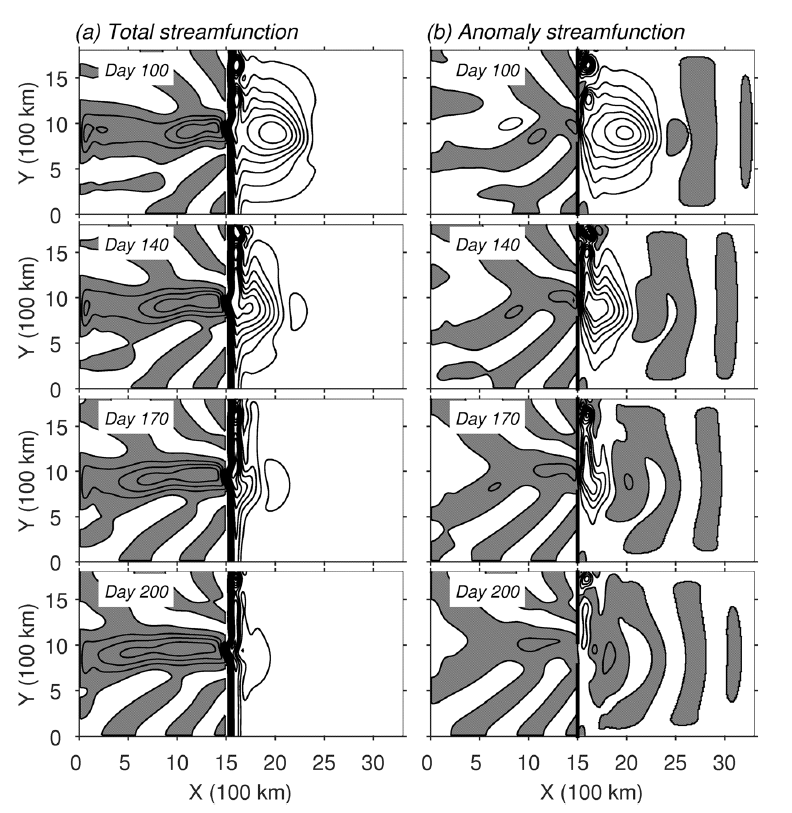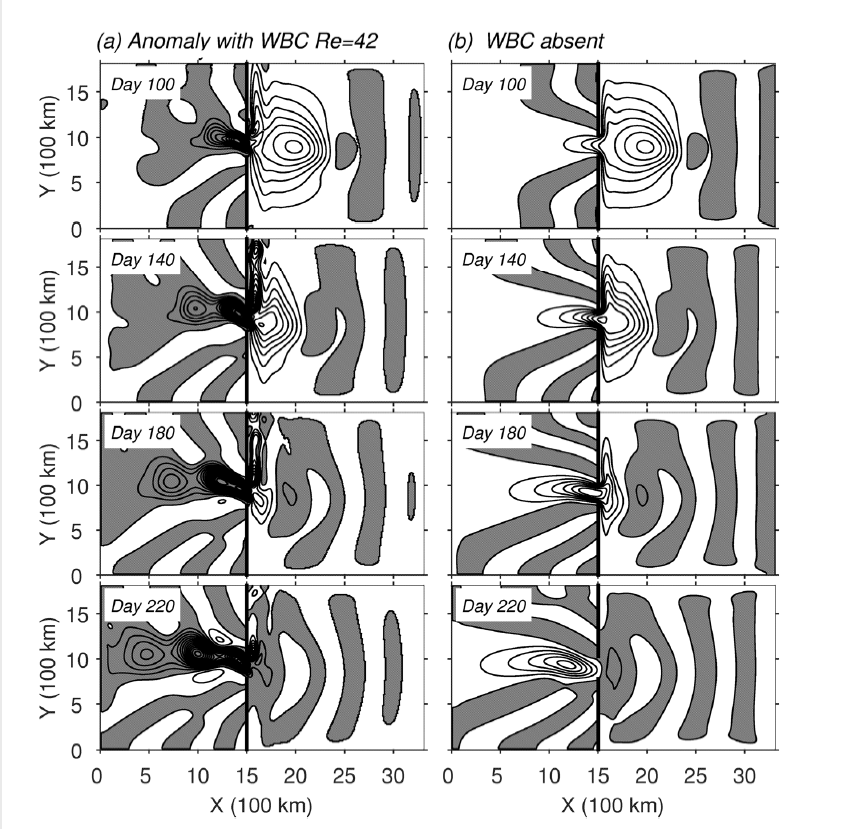Published in Journal of Geophysical Research: Oceans on 21 June 2019
The propagation of cyclonic and anticyclonic mesoscale eddies through a wide meridional gap with a crossing western boundary current (WBC) is studied using a 1.5‐layer quasi‐geostrophic ocean circulation model. The results of the numerical experiments suggest that a steady, leaping WBC blocks nearly completely all eddies from propagating westward through the gap. In comparison, both cyclonic and anticyclonic eddies propagate westward nearly uninterrupted through the gap if the WBC is in a penetrating state. Interactions of mesoscale eddies with a critical‐state WBC trigger regime transitions of the WBC between leaping and penetrating states, resulting in dramatic changes of the circulation west of the gap. The radiation of the circulation plumes from the gap into the western basin due to the WBC regime transition is found to be independent of the size and the initial location of the perturbing eddy in the eastern basin, provided that the WBC path shift is induced successfully by the eddy.

Figure 1. The evolution of an anti‐cyclonic eddy of 60‐km radius blocked by the WBC in steady leaping state (Re = 45). (a) The total stream function and (b) the anomaly stream function with the background WBC subtracted. White and black colors stand for positive and negative stream function values, respectively. The contour interval is 1,000 m2/s. WBC = western boundary current.

Figure 2. Anomaly stream function of an anticyclonic eddy of 60 km radius with the WBC critical from periodic eddy shedding to leaping (Re = 42; a), compared with the eddy propagation without the WBC presence (b). The stream function of the WBC in (a) has been subtracted to show the eddy stream function. Contour interval is 1,000 m2/s. WBC = western boundary current.
http://dx.doi.org/10.1029/2019JC014949
Yuan, D., Song, X., Yang, Y., & Dewar, W. K. ( 2019). Dynamics of mesoscale eddies interacting with a western boundary current flowing by a gap. Journal of Geophysical Research: Oceans, 124, 4117– 4132.